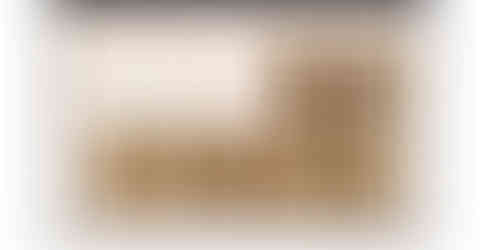Tereza Červeňová: Intimate Constellations
- Rosalie Clement Hennion
- Oct 13
- 4 min read
By Rosalie Clement Hennion
The first light is always natural. For Tereza Červeňová, photography begins in a sunlit moment, a fleeting alignment of light and form, a shimmer of time suspended. Then comes the darkroom, the alchemical counterpoint: film wound, paper curved in her hands, gestures repeated until the image takes shape. “Analogue material is very fragile, yet it is rich in tones and densities,” she reflects. “It needs care and gentleness. The alchemy stored within the print turns a moment in time into ephemeral eternity; the light that gives photography its life also makes it slowly perish.”
Photography, as Roland Barthes wrote in Camera Lucida, consists of rays of light that have touched the subject before reaching the lens, and in turn, the viewer. Each print is not only an image but a certainty: this thing, this body, this moment, existed. It is a testament, though never a permanence, a single click between then and now.
The personal is political. Born in Slovakia and based in London, Červeňová’s practice functions as both diary and protest, meditating on belonging, love, and survival. She earned a BA in Photography from Middlesex University (2014) and an MA from the Royal College of Art (2018), and was recipient of the John Kobal New Work Award at the Taylor Wessing Photographic Portrait Prize (2015). Her series June (2016–18) responded to the turbulence of Brexit, mapping its psychic toll on individuals and relationships as it unfolded on the street and in daily life. The book is held in the TATE Artists’ Book Collection.
In the years that followed, Červeňová’s gaze turned inward. Her subsequent work With and For (2019–22) began to investigate the body itself as a political site. “We all carry our bodies,” she states, “and the body is a political thing, being female, being an immigrant body, a white body, a body of colour.” The home, too, became a charged threshold between the private and the public, no longer a guaranteed sanctuary but a mirror of broader structures of power. During the pandemic, Červeňová found herself, as she recalls, “forcefully withdrawn to the walls of the domestic,” experiencing “what it meant to be in one’s body in a kind of strange captivity, both physical and emotional.”
Červeňová's sensibility engages themes of family, intimacy, and the passage of time familiar from the work of Sally Mann. Her practice also resonates with Nan Goldin's commitment to personal testimony as political record, though Červeňová favours quiet reflection, rendering intimacies with presence and vulnerability. “There is an emotional bond that takes place, no matter how intense, intimate, uncomfortable, or short-lived,” she notes. “As a photographer (…) this is what attracts me most about portraiture—the presence of empathy, a deep longing for intense connection with others and the hopeful, relentless search for it. The camera sits in the middle.”
Her recent photographs inhabit the abstractions of experience, operating as liminal spaces for new perceptions. In one clustered arrangement, seven small prints glow with warm, sepia-toned light: fragments of sunlit planes, with tape forming geometric beams across the surfaces. The repetition and subtle variations of these images prompt the viewer to wonder, are the planes fracturing or expanding? Is this freedom or breaking? Is the light blocked or revealed? Each fragment functions as a small aperture onto the macro scale of feeling, of life itself, echoing Virginia Woolf’s quote: “Millions of things came back to her. Atoms danced apart and massed themselves. But how did they compose what people called a life?” (The Years, 1937)
In Cathedral de San Pedro (2023), a translucent curtain hangs against darkness, the veiled surface comes alive with turquoise and emerald blooms, where light has bled through and developed onto the photographic emulsion. The image was made during Červeňová’s first journey after the pandemic, a trip to Mexico to meet a group of artists from an online residency. The adventure marked a return to human connection after isolation.
Days into the trip, news broke of Russia’s invasion of Ukraine. The world shifted in an instant, and the impact was felt acutely by Červeňová, her friends, and family. As a Slovak artist whose homeland was invaded in 1968, she felt the uncanny recurrence of history within the present. Like Barthes’ description of photography as a mythical denial of death, Červeňová’s prints hold the paradox of fragility and endurance, private experience and collective resonance.
For Červeňová, beauty is not at odds with politics but a necessary lens: her work frames the world with care, even amid its ugliness. In this engagement with light, connection, and freedom, she honours complexity rather than avoiding it.
Her latest body of work explores the invisible violence of domestic abuse through self-portraits, vernacular scenes, and fragments of speech. These sit in contrast to narratives that are often reduced to statistics or broad statements. This is part of what gives her practice its urgency. Červeňová encourages conversations that often remain unspoken: domestic abuse, loneliness, belonging, the subtle negotiations of power and care within families and partnerships. Sensitivity, in her work, is a refusal to look away at the aftermath.
Her photographs are held in the collections of the National Portrait Gallery and the UK Parliament. Each image feels like an act of faith in photography’s capacity to connect us, to remind us that we are bound together by light and shadow. Červeňová’s work offers a slow, attentive vision where the personal and political converge, and where every photograph becomes both a reckoning and a gesture of hope.

























Comments